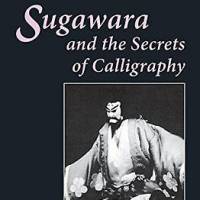High drama with puppets might strike Westerners as an unlikely theatrical experience, but mannequins and those who operate them are accorded considerable respect in Asia.
Sugawara and the Secrets of Calligraphy, Edited and translated by Stanleigh H. Jones Jr.
288 pages
Columbia University Press, Fiction.
First performed in Osaka in 1746, the bunraku play "Sugawara and the Secrets of Calligraphy" is based on the real-life character of Sugawara no Michizane, a respected ninth-century scholar who rose to the post of Minister of the Right, one of the highest positions in the realm. Envious of Sugawara's ascendant power, especially his influence and leverage with the emperor, the Fujiwara patriarchs — cast in the play as the villains of the piece — connive against him.
After Michizane goes to his grave, members of the Imperial and Fujiwara families start dying. In an age of intense superstition, the deaths are said to be the work of Michizane's vengeful spirit, prompting a ritual that restores the dead man to court rank.
The introduction to this English edition describes how the translator was fortunate enough to be in Tokyo in the spring of 1972, when the play was being prepared at the National Theater. He attended rehearsals from morning to night for a week ("literally eating on the run") and was able to make notes, take photographs and obtain audiotapes of the play. This effortless access to the back stages of culture may not be so forthcoming in today's more guarded age.
Read archived reviews of Japanese classics at jtimes.jp/essential.



















With your current subscription plan you can comment on stories. However, before writing your first comment, please create a display name in the Profile section of your subscriber account page.